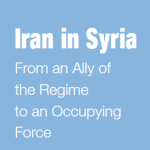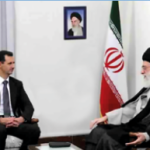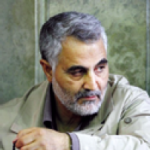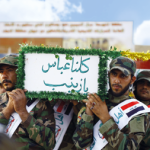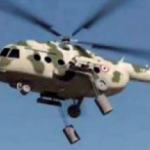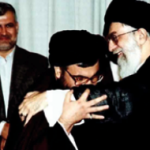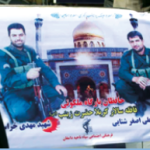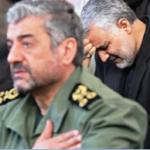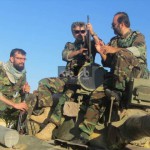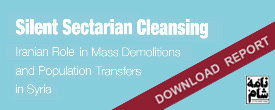IRAN IN SYRIA
From an Ally of the Regime to an Occupying Force
(November 2014)
Chapters & Sections
Foreword
Foreword This report is the result of a year of Naame Shaam’s work. It draws largely on information gathered from monitoring Syrian, Iranian and the international media’s coverage of events in Syria. The majority of the information and sources found in this report are thus in the […]
Executive Summary
Executive Summary The core argument of this report is that the Syrian regime of President Bashar al-Assad would have collapsed a long time ago if it were not for the enormous military and economic support provided to it by the Iranian regime since March 2011, following the […]
I. The Iranian Regime in Syria
I. The Iranian Regime in Syria With the outbreak of the Syrian revolution in March 2011, the relationship between the Syrian and the Iranian regimes started to change from one of mutually beneficial partnership to one of dependency and dominance. The reason: the Syrian regime would not […]
1. Sepah Pasdaran 'advisers'
Contents of this section: Creating the shabbiha The Iranian connection Training War crimes and crimes against humanity Case study: The Houla and Bayda massacres Case study: The shabbiha in Homs Notes & References 1. Sepah Pasdaran ‘advisors’ As mass anti-regime protests started to spread across Syria in […]
2. Foreign militias
Contents of this section: Early involvement Send in the Hezbollah boys The battle of al-Qusayr From a supporting to a leading role Homs Yabroud Testimonies Case study: Hezbollah and the al-‘Otaibeh massacre Case study: Hezbollah in al-Yarmouk Holy wars Case study: Hezbollah denounces destruction of (Shia) holy […]
4. Iranian weapons
Contents of this section: Illegal arms shipments Assisting Syrian regime in its ‘violent crackdown on protesters’ Stepping up military support Made in Iran, used in Syria Case study: Who’s making the barrel bombs? Case study: Did Sepah Qods play a role in the Ghouta chemical massacre? Notes […]
Chapter 1 Conclusion
Conclusion of Chapter I Chapter I has shown that Bashar al-Assad’s regime would not have been able on its own to suppress the mass popular protests that erupted in Syria in March 2011 and the subsequent armed opposition across the country. It has shown that the Syrian […]
II. Syria Under Military Occupation
Contents of this chapter: What is military occupation? Does Iranian presence in Syria constitute a military occupation? From the horse’s mouth But keep it between us Case study: Who’s responsible for the death of Al-Manar journalists in Maaloula? The new command chain Qassem Soleimani, the de facto […]
III. Iran's Vietnam
Contents of this chapter: At any cost ‘Eat just once a day or fast’ Iran’s ‘resistance economy’ Counting the dead Bleeding Iran in Syria How long can the Iranian regime bleed? Notes & References III. Iran’s Vietnam Most observers today agree that the Iranian regime’s adventure […]
3. Iranian fighters
Contents of this section: Official admissions Iran’s not-so-secret army Funerals Pilgrims or fighters? Case study: The mysterious life and death Gen. Hassan Shateri Notes & References 3. Iranian fighters Like other aspects of Iranian involvement in Syria, the issue of Iranian fighters was initially denied by Iranian […]
This report was produced by the Research and Advocacy Team of the campaign group Naame Shaam.
© Naame Shaam, September 2014
Naame Shaam is a group of Iranian, Syrian and Lebanese activists and citizen journalists that focuses on uncovering the role of the Iranian regime in Syria. For more information, see the group’s website: www.naameshaam.org.
Naame Shaam is supported by the Netherlands-based Rule of Law Foundation, www.lawrules.org.
 English
English  فارسی
فارسی  العربية
العربية 